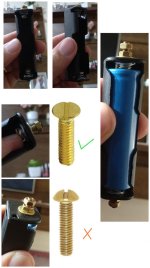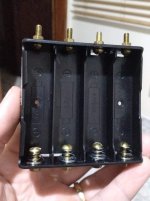Just using the conductive adhesive idea with permanent hard-wired intra-bank connections may not be worth it, since apparently proper spot welding causes no loss of lifetime cycles.
For me the holy grail is easy per-cell monitoring / diagnostics and (again, **easy**) periodic replacement of weaker cells as needed.
Thus allowing the use of cheaper per Ah, even secondhand cells with better overall results and less wasted time tearing down & rebuilding.
My general solderless thread
https://endless-sphere.com/forums/viewtopic.php?f=14&t=99213
Never did get feedback on
http://batteryblocs.com
vruzend I think is a no go, for me personally
For me the holy grail is easy per-cell monitoring / diagnostics and (again, **easy**) periodic replacement of weaker cells as needed.
Thus allowing the use of cheaper per Ah, even secondhand cells with better overall results and less wasted time tearing down & rebuilding.
My general solderless thread
https://endless-sphere.com/forums/viewtopic.php?f=14&t=99213
Never did get feedback on
http://batteryblocs.com
vruzend I think is a no go, for me personally



